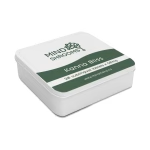We often think of eating as a physical act — fueling the body, feeding hunger, checking off one more thing between meetings or emails. But eating is also emotional, relational, and deeply mental. It’s not just what we eat, but how we eat that affects how we feel.
This is where mindful eating comes in. It’s not a diet. It’s not a set of rules. It’s a practice — one that reconnects us with our food, our senses, and ourselves. And increasingly, science is showing what ancient wisdom always knew: when we eat with awareness, our mood, focus, and emotional regulation improve.
In this article, we’ll explore what mindful eating really means, why it matters, and how to bring it into your daily routine — without stress or perfectionism.
What Is Mindful Eating?
At its core, mindful eating is the practice of:
Paying full attention to the experience of eating — the taste, texture, smell, and sensation.
Becoming aware of your hunger and fullness cues — not just eating because it’s time or convenient.
Noticing your emotional state — and how it affects what you choose to eat, how fast you eat, or how you feel after eating.
Eating without judgment — no good vs. bad foods, no guilt, just observation.
It’s not about being “perfectly present” for every bite. It’s about creating space to experience food as more than fuel — as something that supports your mental and emotional life.
Why Mindful Eating Affects Mood
The relationship between food and mood is bi-directional. What you eat influences how you feel — but also, how you feel influences how and what you eat.
Mindful eating interrupts unconscious patterns that often lead to:
Emotional eating (eating to numb, distract, or soothe)
Rushed meals that leave us unsatisfied and mentally foggy
Overeating or undereating due to disconnection from the body
Stress-based food choices that deplete energy
By slowing down and tuning in, you begin to notice how certain foods affect your focus, mood, and energy — not just immediately, but over time. This builds awareness and agency: you begin to eat in a way that supports how you want to feel.
Science Behind Food and Mood
Emerging research supports what many have long observed intuitively:
🧠 The Gut-Brain Axis
Your digestive system and brain are connected by a complex communication system, involving neurotransmitters like serotonin and dopamine. In fact, over 90% of serotonin (a key mood stabilizer) is produced in the gut.
When digestion is impaired — by stress, inflammation, or poor eating habits — mood often suffers. Mindful eating improves digestion by activating the parasympathetic nervous system, allowing the body to “rest and digest.”
⚖️ Blood Sugar and Mood Stability
Rushed or erratic eating leads to blood sugar spikes and crashes — which can mimic anxiety, irritability, or fatigue. Eating slowly, chewing thoroughly, and choosing balanced meals can prevent these mood fluctuations.
💬 Cortisol and Cravings
High stress (and the cortisol it releases) can increase cravings for fast-digesting, high-sugar foods. When you eat mindfully, stress levels drop — and your choices become more intentional, less reactive.
Everyday Mindful Eating Practices
Mindful eating isn’t about transforming every meal into a ritual. It’s about introducing small, consistent shifts. Here are ways to begin:
1. Begin with one quiet meal per day
Choose a time where you can eat without distractions — no screens, no multitasking. Sit, breathe, and just eat.
2. Use your senses
Before you eat, take 10–15 seconds to observe your food:
What does it smell like?
What colors do you see?
What textures are present?
This primes your brain for presence and enhances enjoyment.
3. Chew slowly, fully
Chewing is the first step of digestion. Rushed chewing leads to incomplete digestion and less satisfaction. Try chewing each bite 15–25 times before swallowing.
4. Notice hunger and fullness
Before you eat, ask: Am I hungry?
Halfway through, pause and ask: Am I still enjoying this? Am I satisfied or just finishing automatically?
This builds awareness of your body’s natural regulation systems.
5. Journal briefly after meals
Once a day, jot down:
What did I eat?
How did I feel before?
How do I feel now (mood, energy, focus)?
This builds a personal feedback loop — over time, you’ll see patterns that guide future choices.
Bringing Mindfulness Into Specific Food Moments
You don’t have to “be mindful” for an entire meal. Even a single mindful bite can shift your state. Here’s how it can show up in different contexts:
☕ Morning tea or coffee
Smell it before you sip. Feel the warmth of the mug. Don’t rush the first sip. This turns your morning drink into a grounding moment.
🍽️ Lunch at your desk
Even if you have 15 minutes, close tabs, put away your phone, and focus on 5–10 minutes of eating quietly. Even a partially mindful meal counts.
🍲 Dinner with family or friends
Make conversation part of the meal — but take time to pause and taste. Put utensils down between bites. Ask about what others are enjoying.
Mindful Snacking and Cravings
Mindfulness doesn’t mean avoiding snacks or “bad” foods. It means bringing curiosity to your cravings.
Before you reach for a snack, ask:
Am I hungry — or just bored/stressed/tired?
What am I hoping this food will do for me right now?
What else might offer comfort or clarity in this moment?
Sometimes you’ll still eat the cookie — but you’ll do so consciously, which changes everything.
The Emotional Impact of Mindful Eating
What happens when you make mindful eating a habit? Over time, people often report:
Improved mood stability
Reduced stress-related eating
Greater appreciation for simple foods
Deeper sense of self-trust and intuition
Increased enjoyment of meals and snacks alike
This is not about “control.” It’s about connection — with your food, your body, and your emotional landscape.
A Week of Gentle Mindful Eating Prompts
To help you begin, here’s a sample week of micro-practices:
Day | Prompt |
|---|---|
Monday | Take 3 deep breaths before your first bite. |
Tuesday | Eat one meal in silence — no screens, no noise. |
Wednesday | Pause halfway through your meal and check in with your body. |
Thursday | Journal for 2 minutes after a snack. |
Friday | Use all five senses before and during your meal. |
Saturday | Cook something slowly — enjoy the process, not just the result. |
Sunday | Reflect: what food moment brought you the most joy this week? |
Final Thoughts: Eating as a Source of Clarity
Food is more than nutrition. It is memory, culture, care, pleasure, rhythm, and restoration. And how we relate to it often mirrors how we relate to ourselves.
Mindful eating isn’t about restriction. It’s about presence. It teaches us that food is not just about managing weight, fueling work, or controlling outcomes. It’s about being here — now — with what’s in front of us.
When we bring intention to our meals, we begin to digest not just food, but emotion, stress, and life itself — more slowly, more gently, and more wisely.
So let your next meal be more than a pit stop. Let it be a pause, a breath, a moment of connection between body and mind.
That’s where wellness begins — and continues, one mindful bite at a time.







